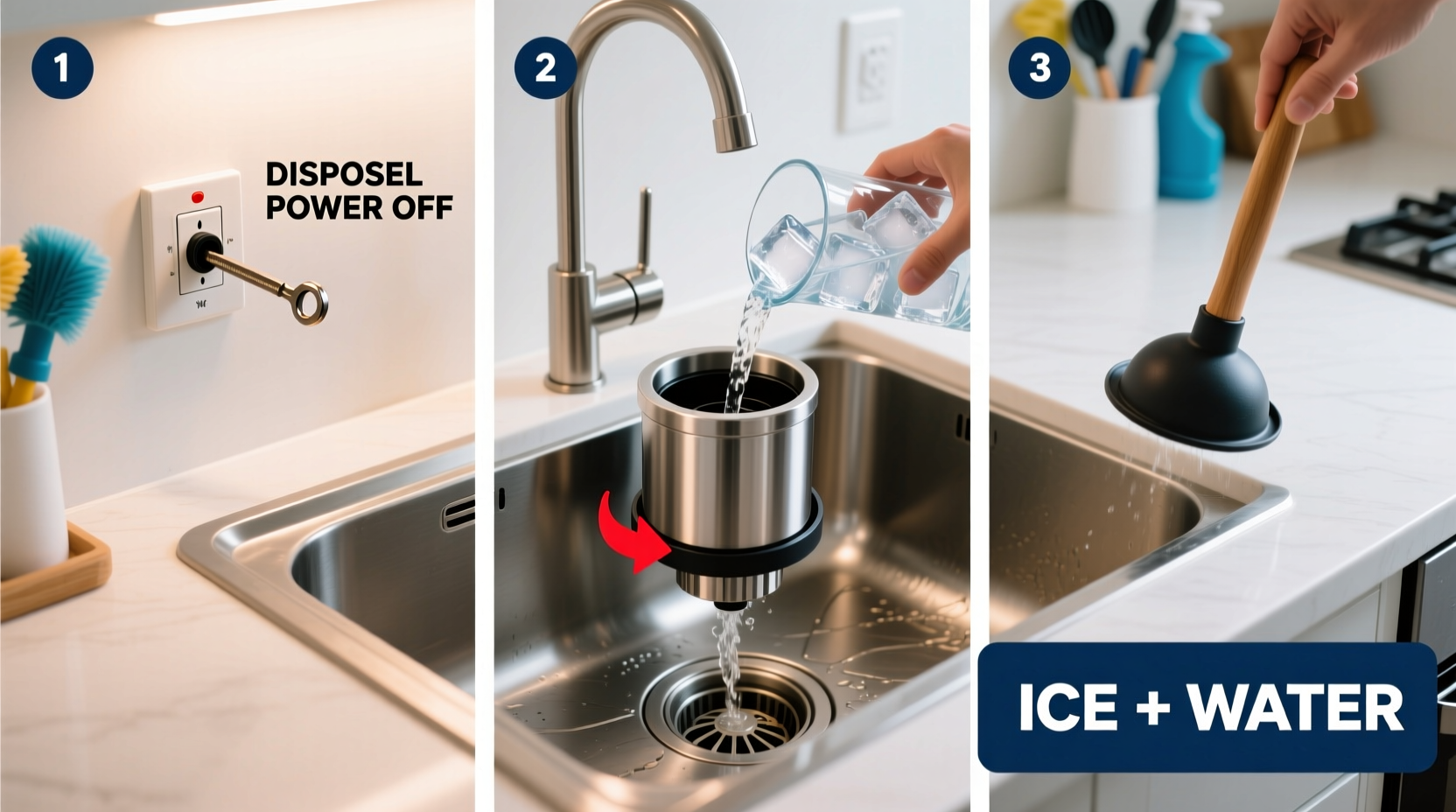Why Your Food Disposal Clogs and How to Fix It Fast
When your food disposal stops working, standing water in the sink creates immediate stress. Most clogs happen because of improper use—fibrous foods, grease buildup, or foreign objects. The good news? 90% of disposal clogs can be cleared without professional help if you act quickly and safely.Safety First: Critical Precautions Before Starting
Before attempting any unclogging method, follow these essential safety steps:
- Turn off power at the circuit breaker—never just unplug it
- Wait 15 minutes for the motor to cool down if it's been running
- Use rubber gloves to protect your hands from sharp debris
- Keep children and pets away from the work area

Step 1: Diagnose Your Clog Type
Understanding what's causing your blockage determines the best solution:
| Clog Type | Symptoms | Best Solution |
|---|---|---|
| Soft food clog | Disposal hums but won't grind | Plunger or baking soda/vinegar |
| Hard object blockage | Disposal makes grinding noise but stops | Manual rotation with Allen wrench |
| Complete jam | Disposal won't turn on at all | Reset button + manual rotation |
Step 2: Clear Standing Water Safely
Remove excess water before attempting fixes:
- Use a cup to bail out standing water into a bucket
- Place towels around the sink to catch spills
- Check for visible debris with a flashlight
- Remove large objects with tongs (never hands)
Method 1: The Plunger Technique (For Soft Clogs)
This works for 60% of disposal clogs according to the Plumbing-Heating-Cooling Contractors Association:
- Create a tight seal with the plunger over the drain
- Add enough water to cover the plunger cup
- Perform 10-15 firm, quick plunges
- Listen for the "whoosh" indicating clearance
- Test by running cold water through the disposal
Method 2: Baking Soda and Vinegar (Natural Drain Cleaner)
This chemical-free method clears minor clogs and eliminates odors:
- Pour ½ cup baking soda into the disposal
- Add 1 cup white vinegar—expect fizzing
- Cover the drain with a stopper for 15 minutes
- Flush with hot water for 30 seconds
- Run the disposal with cold water to test
This method works best for organic buildup according to EPA guidelines on household drain maintenance.
Method 3: Reset Button and Manual Rotation
For disposals that won't turn on:
- Locate the reset button (usually red, on the bottom)
- Press firmly until it clicks
- Insert a ¼" Allen wrench into the bottom center hole
- Rotate back and forth to free the impeller
- Remove the wrench and test the disposal
When to Call a Professional Plumber
Stop DIY attempts immediately if you notice:
- Water leaking from the disposal unit
- Burning smell from the motor
- Clogs returning within days of clearing
- Disposal won't reset after multiple attempts
The Plumbing-Heating-Cooling Contractors Association recommends professional service when clogs persist after two DIY attempts to prevent permanent damage.
Prevent Future Clogs: 5 Proven Habits
Extend your disposal's life with these daily practices:
- Always run cold water while operating the disposal
- Avoid fibrous foods like celery stalks and corn husks
- Never pour grease down the disposal
- Grind citrus peels weekly to clean blades
- Run the disposal for 15 seconds after food clears
Common Questions About Food Disposal Clogs
Can I use chemical drain cleaners in my food disposal?
No, chemical drain cleaners can damage disposal components and create dangerous fumes. The EPA recommends natural methods like baking soda and vinegar for disposal maintenance.
How often should I clean my food disposal?
Perform basic cleaning weekly by grinding ice cubes and citrus peels. Deep cleaning with baking soda and vinegar should happen monthly according to manufacturer guidelines from InSinkErator.
Why does my disposal smell bad after unclogging?
Odors indicate residual food particles. Run cold water for 30 seconds, then grind lemon peels or a mixture of baking soda and vinegar to eliminate smells safely.
Is it normal for the disposal to vibrate during operation?
Mild vibration is normal, but excessive shaking indicates an unbalanced load or foreign object. Turn off immediately and check for obstructions before continuing use.











 浙公网安备
33010002000092号
浙公网安备
33010002000092号 浙B2-20120091-4
浙B2-20120091-4